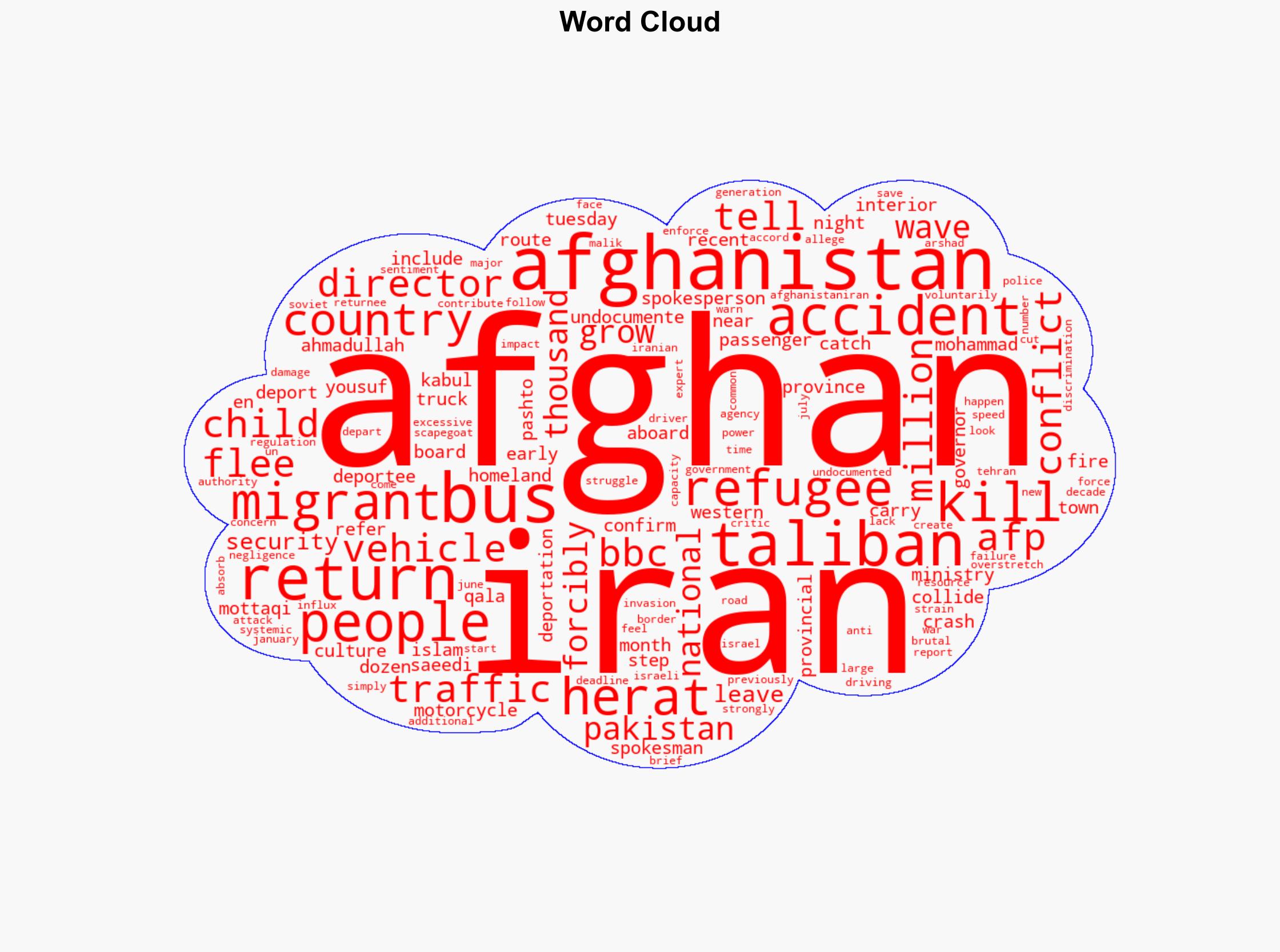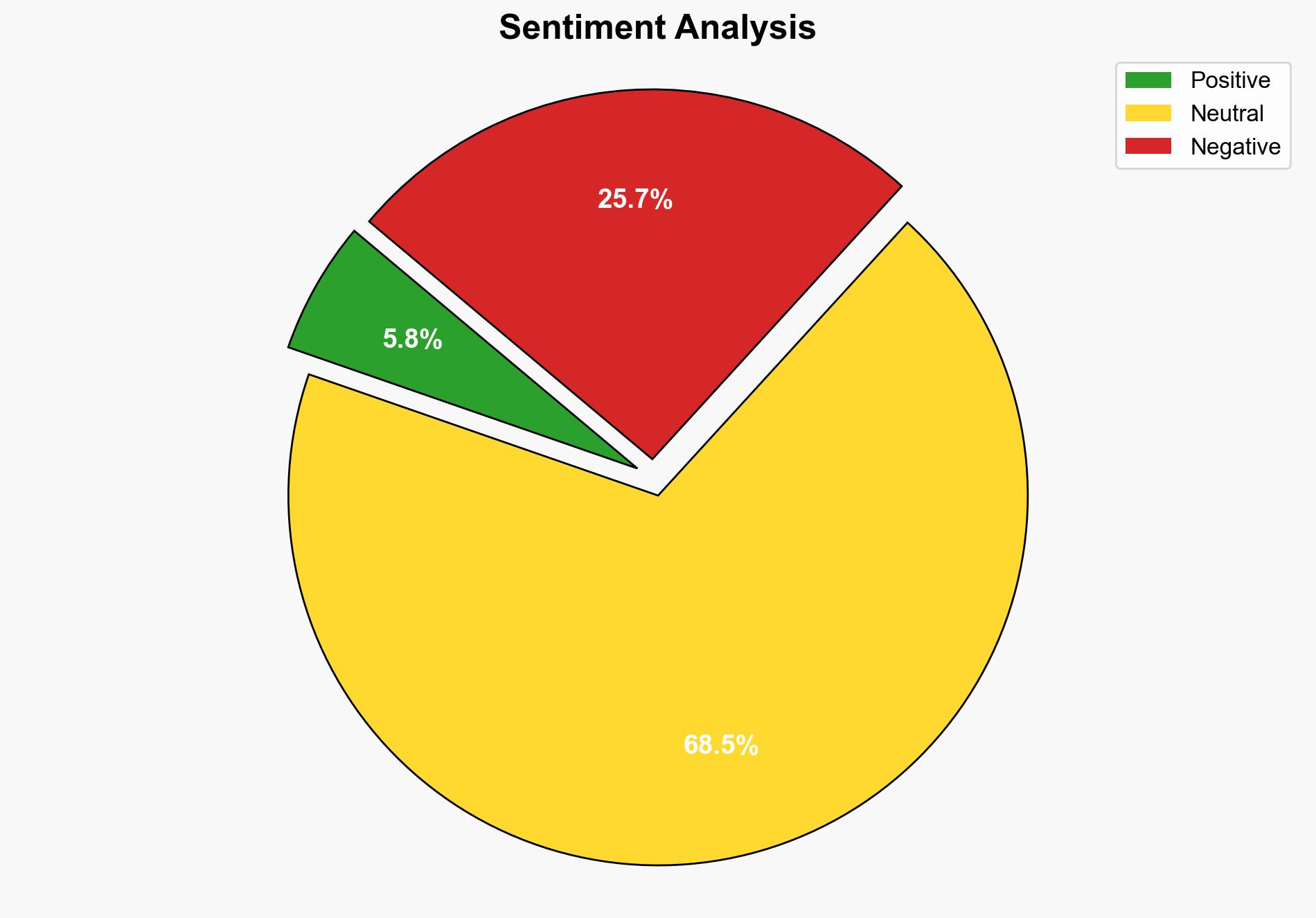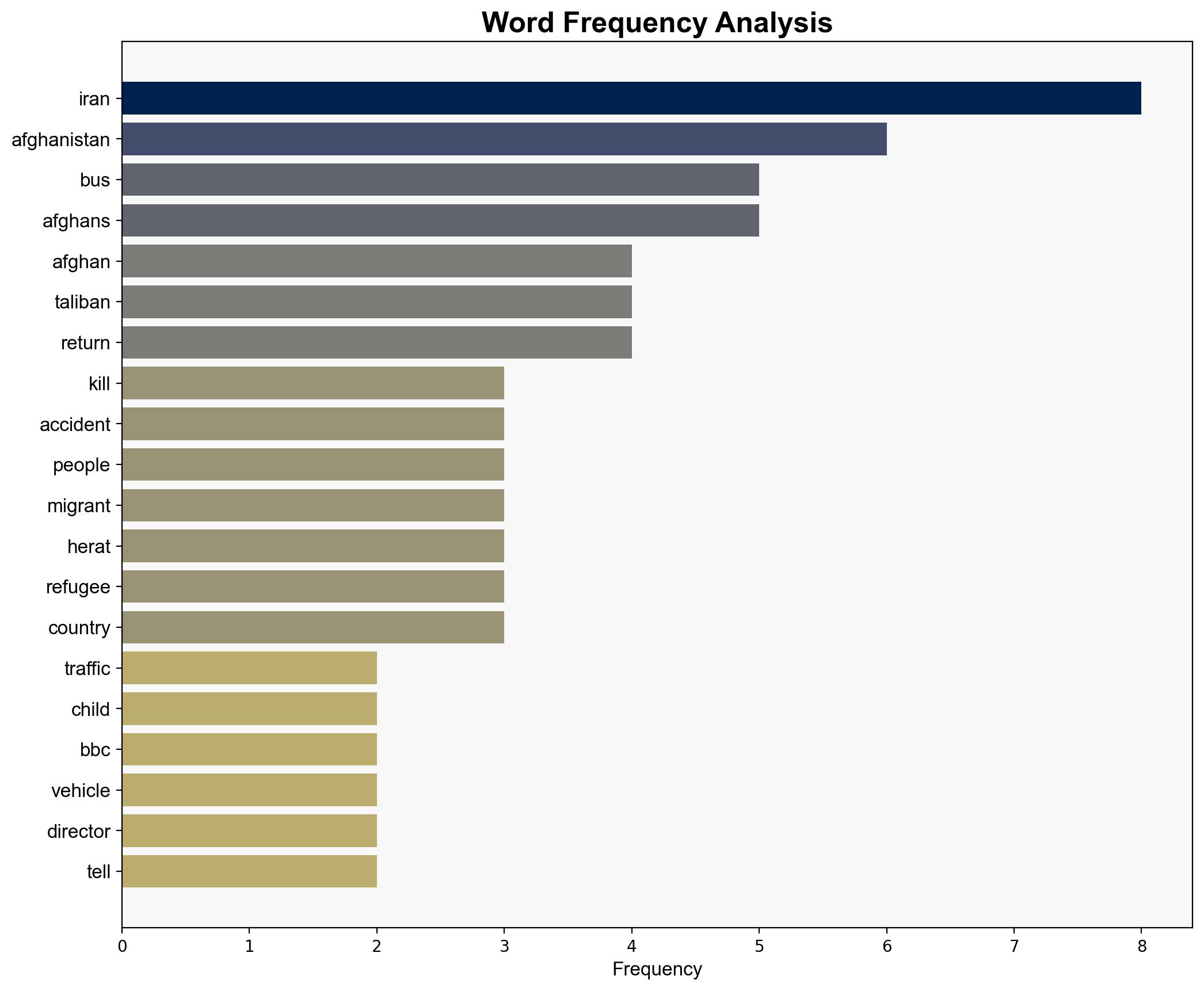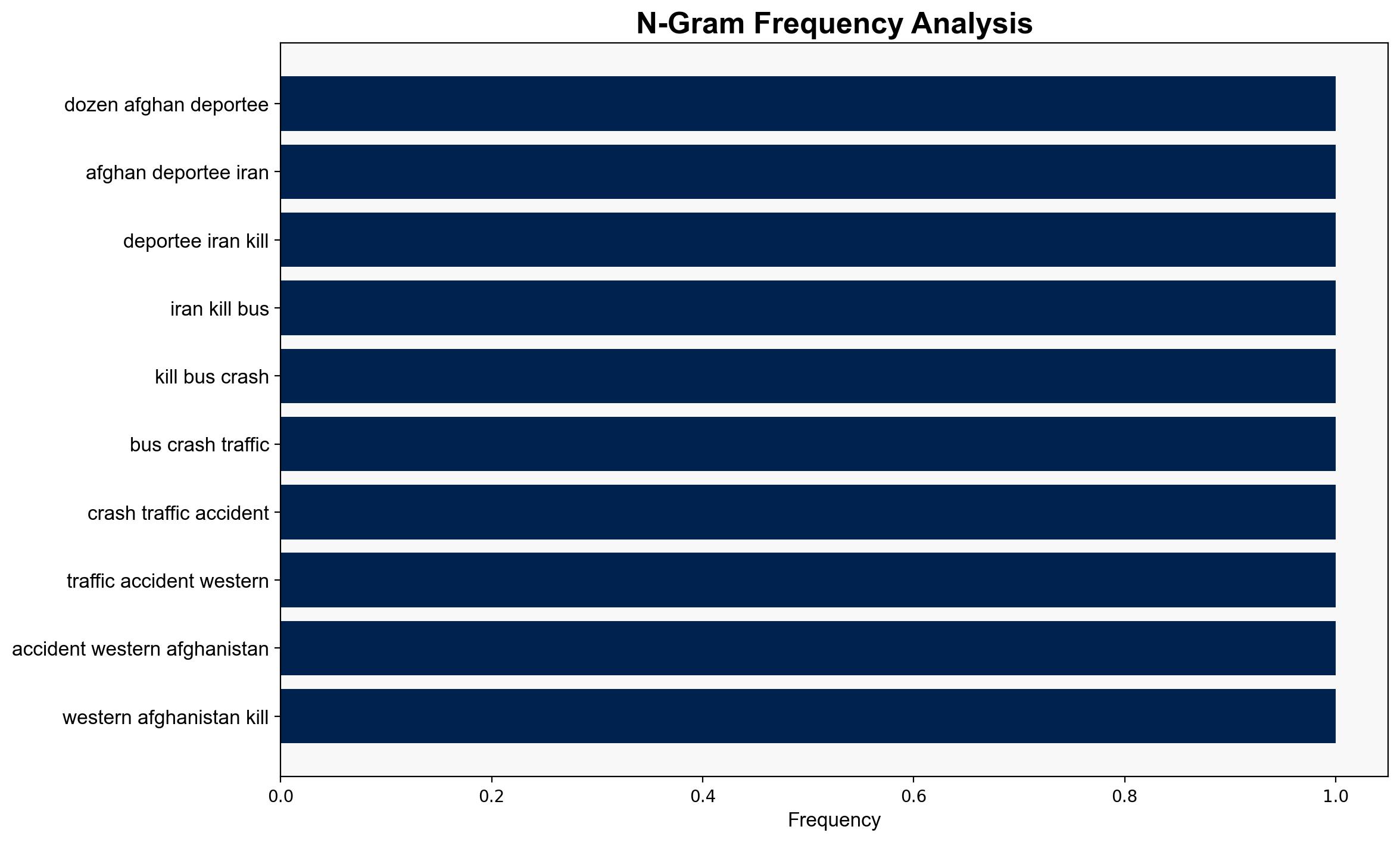Dozens of Afghan deportees from Iran killed in bus crash – BBC News
Published on: 2025-08-20
Intelligence Report: Dozens of Afghan Deportees from Iran Killed in Bus Crash – BBC News
1. BLUF (Bottom Line Up Front)
The most supported hypothesis suggests that the bus crash was primarily due to systemic issues such as poor road conditions and lack of enforcement of traffic regulations in Afghanistan. This is compounded by the increased deportation of Afghan migrants from Iran, which has overwhelmed local infrastructure. Confidence level: Moderate. Recommended action: Enhance monitoring and support for returnee integration and infrastructure improvement in Afghanistan.
2. Competing Hypotheses
1. **Systemic Infrastructure Failure Hypothesis**: The crash resulted from the poor state of Afghan infrastructure and inadequate traffic regulation enforcement, exacerbated by the sudden influx of deportees from Iran.
2. **Intentional Negligence or Sabotage Hypothesis**: The crash might have been a result of intentional negligence or sabotage, possibly as a means to further destabilize the region or as a reaction to anti-Afghan sentiment in Iran.
Using ACH 2.0, the first hypothesis is better supported due to the historical context of poor infrastructure and traffic regulation in Afghanistan, and the recent increase in deportations overwhelming local systems.
3. Key Assumptions and Red Flags
– **Assumptions**:
– Afghan infrastructure is inadequate to handle increased traffic.
– Iran’s deportation policies are driven by national security concerns.
– **Red Flags**:
– Lack of detailed accident investigation data.
– Potential bias in Iranian deportation narratives.
– Absence of direct evidence linking the crash to intentional acts.
4. Implications and Strategic Risks
– **Economic**: Strain on Afghan resources due to increased returnee population.
– **Geopolitical**: Potential for increased tensions between Afghanistan and Iran.
– **Psychological**: Heightened fear and uncertainty among Afghan deportees.
– **Cascading Threats**: Further destabilization could lead to increased migration pressures on neighboring countries.
5. Recommendations and Outlook
- **Short-term**: Increase international aid focused on infrastructure and traffic safety in Afghanistan.
- **Medium-term**: Develop bilateral agreements between Afghanistan and Iran to manage deportations more effectively.
- **Long-term**: Invest in capacity-building initiatives to improve Afghan infrastructure resilience.
- **Scenario Projections**:
– **Best Case**: Improved infrastructure reduces accident rates and better integration of returnees stabilizes the region.
– **Worst Case**: Continued accidents and inadequate support lead to humanitarian crises and regional instability.
– **Most Likely**: Gradual improvement with ongoing challenges in infrastructure and integration.
6. Key Individuals and Entities
– Ahmadullah Mottaqi
– Mohammad Yousuf Saeedi
7. Thematic Tags
national security threats, regional focus, infrastructure, migration, humanitarian crisis





